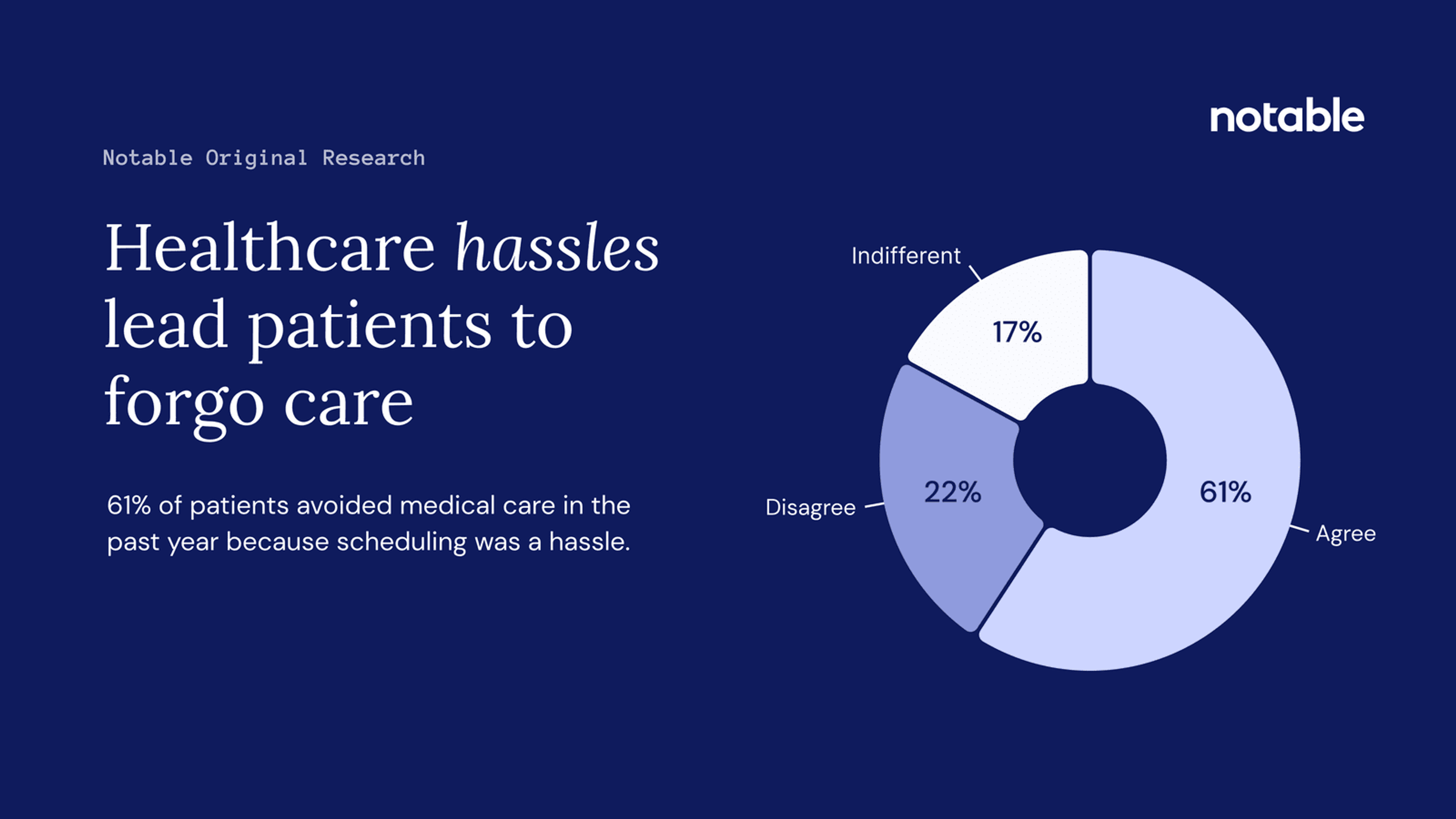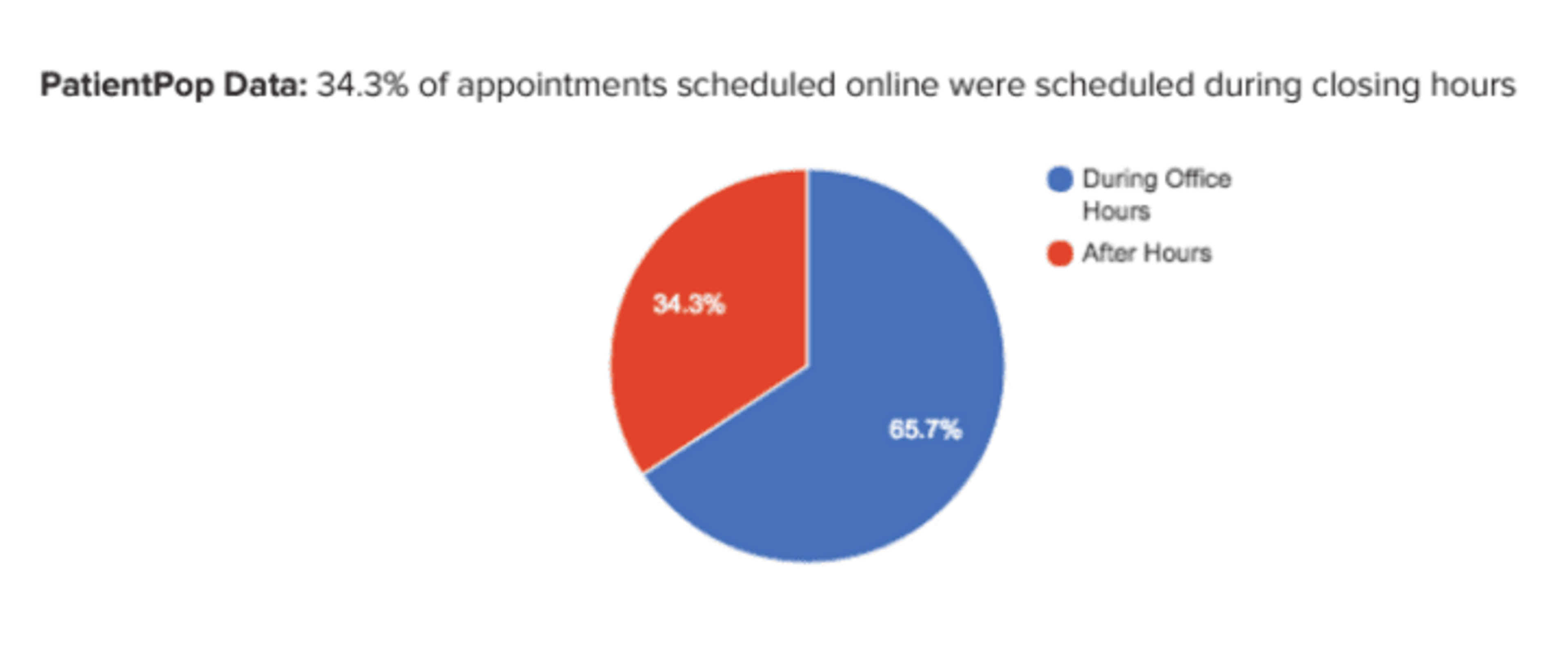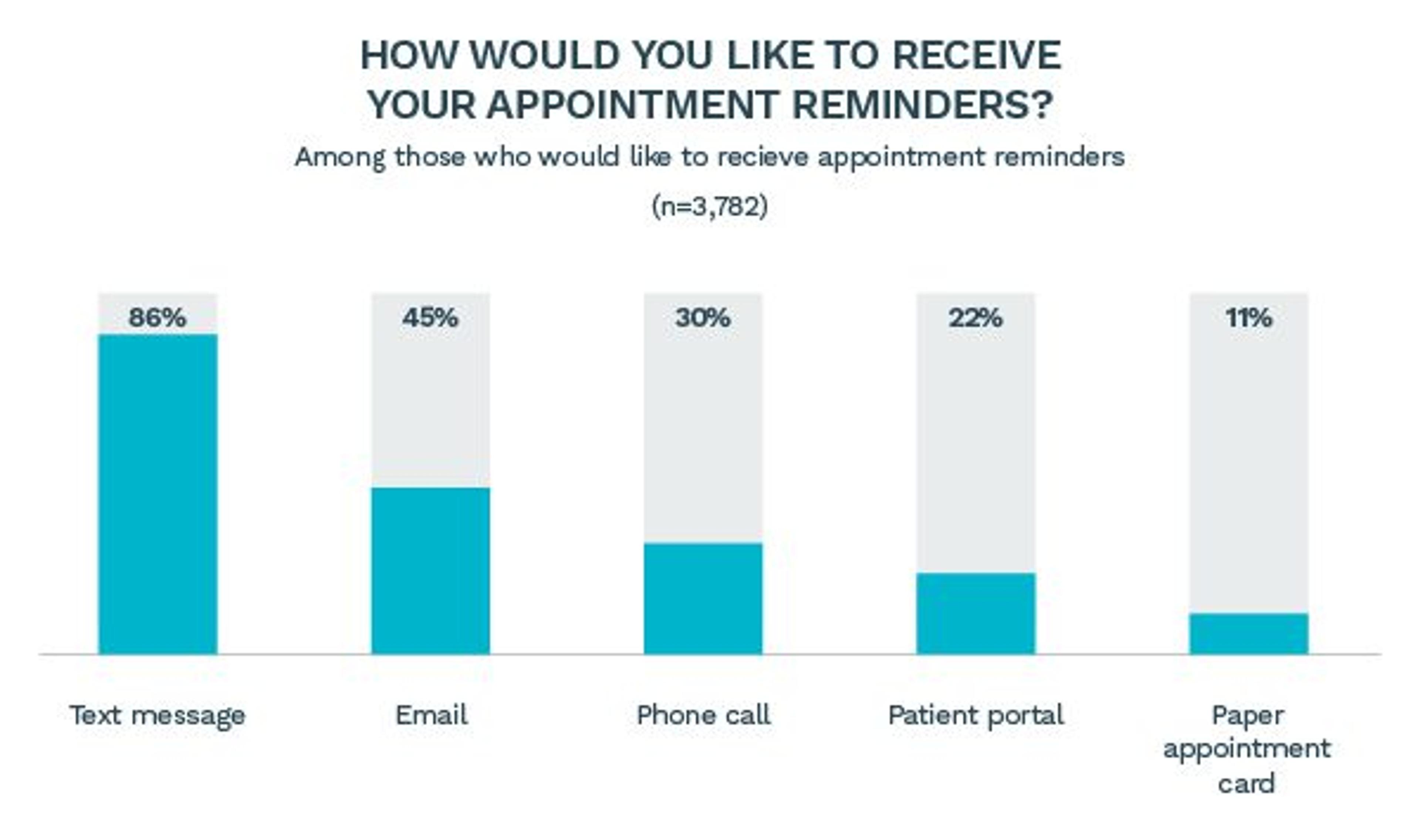blog
7 Tips to Streamline Your Patient Scheduling Workflow

SECTIONS
Navigating patient scheduling workflows in today’s fast-paced, digitally-driven healthcare environment is no doubt complex—but getting it right is also a must. Traditional systems can no longer keep up with the pace of healthcare provision or the preferences of modern patients.
In this article, we’ll explore how you can modernize, optimize, and streamline the patient scheduling workflow at your healthcare organization with 7 actionable tips. By adopting these strategies, you’ll not only optimize your internal operations but improve the quality of service and care you can deliver.
Key Takeaways:
- More than 60% of patients say they’ve avoided medical care due to scheduling hassles.
- Online scheduling systems and software platforms are becoming competitive imperatives in the healthcare industry.
- Automating tasks like patient waitlists and appointment reminders both improves appointment attendance rates and frees up time for your internal staff.
- Data plays a crucial role in optimizing patient scheduling workflows, providing insight about patient demand and preferences.
Understanding the Challenges of Patient Scheduling
Patient scheduling has long been a notorious pain point for healthcare organizations. Traditional patient scheduling systems, largely manual and often supported by outdated technologies, are inefficient and can leave both administrators and patients frustrated by the appointment setting process.
When an organization has scheduling problems, the issues can also negatively impact overall operations, care and service quality, and even patient outcomes. One recent survey found that an alarming 61% of patientsOpens in a new tab have avoided medical care in the past year because scheduling was a hassle. This presents huge risks like late diagnoses, missed prescriptions, and poor patient adherence due to a lack of follow-up.

Image Source
Some of the most common patient scheduling-related challenges organizations face are:
- High Volume of Appointments: Managing a large number of appointments can overwhelm staff without the right tools in place, leading to errors, long wait times, and resource inefficiencies.
- Inadequate Handling of Changes and Cancellations: Traditional systems often struggle with efficiently managing sudden schedule changes, which often results in unutilized time slots and missed opportunities for patient care.
- Reliance on Manual Processes: Manual data entry and record-keeping increase the risk of errors and limit the ability to track and analyze scheduling data effectively.
- Difficulty Balancing Patient and Provider Availability: Matching patient preferences with provider availability can be a complex task, often leading to scheduling conflicts and missed appointments.
- Limited Predictive Scheduling Capabilities: Without robust data analysis, predicting patient flow and optimizing schedules to accommodate varying demands becomes challenging.
The need across the healthcare ecosystem for more optimized scheduling workflows has never been more clear. Scheduling systems should not only be able to manage high appointment volumes and adapt to changes efficiently, but also utilize data management to enhance patient and staff experiences.
Next, we’ll explore how healthcare organizations can overcome patient scheduling workflow by adopting advanced data management tools and strategies, including automated, data-driven software systems.
7 Tips to Streamline Patient Scheduling Workflow
1. Implement an Online Scheduling System
An online scheduling system is a no-brainer in today’s digitally-driven world. Without one, it’s likely you’ll lose patients who find traditional phone scheduling (which often comes with long wait times) outdated and inconvenient. Online scheduling not only allows patients to schedule their own appointments (which frees up time for your staff to do other things), it makes it a 24/7 service not limited to business hours.
Today, with more than a thirdOpens in a new tab of appointments being booked outside of office operating hours, an online scheduling system is in clear alignment with modern patient preferences.

2. Utilize Patient Scheduling Software
Investing in a backend patient scheduling software system can transform the daunting task of managing appointments into a streamlined and efficient process. Features such as automated reminders, calendar integration, and real-time updates improve staff efficiency and elevate the patient experience.
Software tools can also help you continually improve and optimize your patient scheduling workflows by providing data-driven insights around things like seasonal demand, peak days and times, no-show rates, requests for specific physicians, and more.
3. Optimize Staff Training and Responsibilities
Efficiency in patient scheduling is partly dependent on well-trained staff. Ensuring that all team members are proficient in using scheduling software and understand the best practices in patient scheduling is key. It ensures the tools you invest in are used to their fullest potential (maximizing your ROI) while reducing the risk of human error in the scheduling process.
In most cases, you can lean on your software vendor for help with this step. A good vendor will be happy to provide onboarding support and even run staff training sessions for your teams.
4. Implement a Patient Waitlist System
Cancellations and no-shows are unavoidable in healthcare. By embracing this reality in your patient scheduling workflows, you can reduce their negative impact. One of the best ways to do this is with an automated waitlist system.
When last-minute openings become available, your system will contact patients on the waitlist and attempt to fill the open slot. This kind of system optimizes your appointment fulfillment rate, improves patient satisfaction by offering sooner availability, and enhances overall patient care efficiency.
5. Analyze and Adjust Scheduling Based on Patient Flow
Adopting a data-driven approach to scheduling involves analyzing patient flow data to identify patterns and peak demand times. This insight allows for dynamic adjustments to your schedule, ensuring greater flexibility and responsiveness to changing patient volumes.
Over time, you can use patient flow data to plan more efficiently, aligning staffing volume, physician schedules, and hours of operation with patient demand for appointments.
6. Streamline Communication Channels
Clear and effective communication is the backbone of a successful scheduling system. Implementing multi-channel communication methods enhances the clarity and efficiency of interactions both within the healthcare team and with patients.
This approach not only keeps everyone well-informed but also contributes to a smoother scheduling experience. It’s something patients are asking for, too—when asked about their preferred communication channels, several channels earned high response rates.

7. Regularly Review and Update Scheduling Processes
The healthcare landscape is constantly evolving, and so should your patient scheduling workflows. Doing regular assessments and updates to the scheduling system are necessary to keep pace with changing patient needs and healthcare trends. This proactive approach ensures the scheduling workflow remains effective, adaptable, and aligned with your organization’s goals.
Final Thoughts
The efficient management of patient scheduling workflows is more than an operational necessity—it’s a vital contributor to providing exceptional healthcare. The strategies outlined in this article are key for transforming the complex and time-consuming process of patient scheduling into a streamlined, efficient, and patient-centric experience.
By continually seeking improvements and adapting to the evolving healthcare landscape, organizations can not only meet but exceed the expectations of their patients and staff. In an industry where time and accuracy are paramount, refining the scheduling process plays a major role in achieving this.
As healthcare continues to advance, the integration of robust data management practices into patient scheduling workflows will become increasingly important. That means adopting patient scheduling tools that integrate with your other systems, automate processes, and deliver data insights.
Visit our website to learn how Gaine solutions can help.
